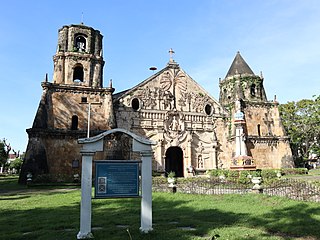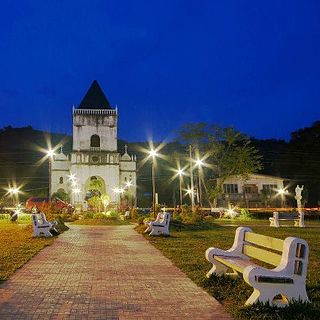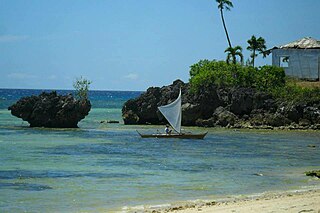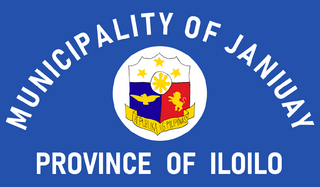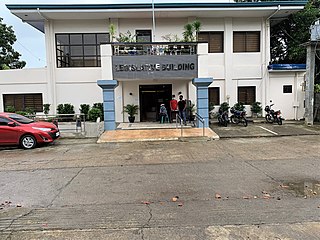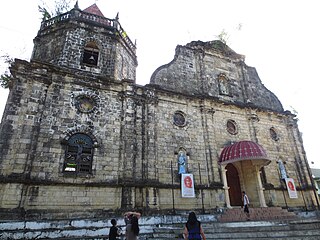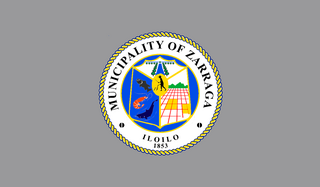This article needs additional citations for verification .(March 2013) |
Pototan | |
|---|---|
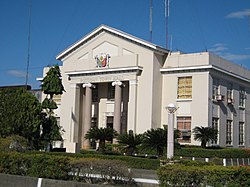 Municipal Hall | |
| Nickname: Christmas Capital of Western Visayas | |
 Map of Iloilo with Pototan highlighted | |
Location within the Philippines | |
| Coordinates: 10°57′N122°38′E / 10.95°N 122.63°E | |
| Country | Philippines |
| Region | Western Visayas |
| Province | Iloilo |
| District | 3rd district |
| Founded | 1874 |
| Barangays | 50 (see Barangays) |
| Government | |
| • Type | Sangguniang Bayan |
| • Mayor | Rafael Enrique P. Lazaro |
| • Vice Mayor | Tomas M. Peñaflorida |
| • Representative | Lorenz R. Defensor |
| • Municipal Council | Members |
| • Electorate | 45,338 voters (2022) |
| Area | |
| • Total | 97.10 km2 (37.49 sq mi) |
| Elevation | 25 m (82 ft) |
| Highest elevation | 59 m (194 ft) |
| Lowest elevation | 12 m (39 ft) |
| Population (2020 census) [3] | |
| • Total | 78,298 |
| • Density | 810/km2 (2,100/sq mi) |
| • Households | 18,761 |
| Demonym(s) | Filipino: Taga-Pototan Kinaray-a: Pototanon Hiligaynon: Pototanon |
| Economy | |
| • Income class | 1st municipal income class |
| • Poverty incidence | 15.35 |
| • Revenue | ₱ 229 million (2020) |
| • Assets | ₱ 679.4 million (2020) |
| • Expenditure | ₱ 166.2 million (2020) |
| • Liabilities | ₱ 127.7 million (2020) |
| Service provider | |
| • Electricity | Iloilo 2 Electric Cooperative (ILECO 2) |
| Time zone | UTC+8 (PST) |
| ZIP code | 5008 |
| PSGC | |
| IDD : area code | +63 (0)33 |
| Native languages | Karay-a Hiligaynon Tagalog |
| Website | www |
Pototan (Kinaray-a : Banwa ka Pototan, Hiligaynon : Banwa sang Pototan, Tagalog : Bayan ng Pototan), is a 1st class municipality in the province of Iloilo, Philippines. According to the 2020 census, it has a population of 78,298 people. [3]
Contents
- History
- Early history
- Spanish era
- American era
- World War II
- Geography
- Barangays
- Climate
- Demographics
- Economy
- Education
- Private Schools
- Tertiary
- Secondary
- Primary
- Government
- List of chief executives
- References
- External links
The town lies on the banks of the Suage River, 30 kilometres (19 mi) north from Iloilo City. The town has an area of 94 km2, 85% of which is agricultural land. In December 1997, it was declared as the "Christmas Capital of Western Visayas" because of its famed Christmas Festival of Lights.
Considered the rice granary of Panay, the town is bordered by Dingle to the north, Zarraga to the south, Barotac Nuevo to the east, New Lucena, Iloilo and Mina to the west.




